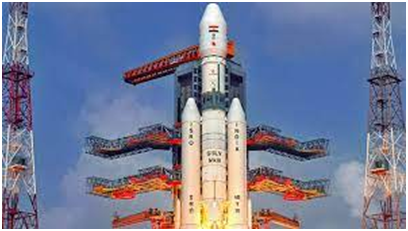ISRO to launch chandrayaan 3 in august this year
What is the news:
- Union Minister Jitendra Singh while replying to a question in Lok Sabha, informed that the much-awaited Chandrayaan-3 is scheduled for launch in August 2022.
- He said the dream of Chandrayaan-3 is being fulfilled based on what the scientists learnt from the Chandrayaan-2 mission and also the suggestions of experts.
- The launch of the Chandrayaan-3 has been speculated for a long time and this announcement by Singh is certainly good news for our country.
About the Chandrayaan 3
- The Chandrayaan-3 mission will be India’s second attempt at executing a soft landing on the surface of the Moon.
- It is a follow-up mission to Chandrayaan-2 and is meant to demonstrate Lunar landing and roving capability.
- The Chandrayaan-3 spacecraft will consist of a lander and rover along with a propulsion module that will carry the fuel for various manoeuvres needed to navigate the landing module after its launch.
- The mission will help the scientists to understand the thermal exchange and physical properties of the uppermost Lunar soil.
- Unlike its predecessor, Chandrayaan-3 will not have an orbiter but will use the same configuration.
- It will use the existing Chandrayaan-2 orbiter, thereby reducing the overall mission cost. The orbiter weighs 2,379 kg, carries five instruments and has a mission life of seven years.

- It is mounted with solar panels that can generate 1kW of electrical power. Chandrayaan-3 mission has been designed to complete the unfinished goals of the Vikram lander and the six-wheeled Pragyaan rover, which together crashed into the Moon in 2019.
- The Vikram lander used five retro thrusters, while the modified lander on the Chandrayaan 3 mission will have only four retro thrusters in the extreme ends, getting rid of the central engine.
- Also, the Chandrayaan-3 lander will be equipped with a Laser Doppler Velocimeter (LDV).
- Chandrayaan-3 is an important mission for the Indian Space Research Organisation (ISRO) as it will demonstrate our nation’s abilities to make landings for further interplanetary missions.
Delay in mission:
- Initially, the Chandrayaan-3 was supposed to be launched in 2021.
- But the outbreak of the COVID-19 pandemic and the resultant lockdown affected several projects of ISRO including this one.
- As a result, its launch date was postponed.
- According to reports, the ISRO in December 2019 requested the government for the initial funding of the project, amounting to Rs 75 crore, out of which Rs 60 crore would be spent to meet the expenditure towards machinery, equipment and other capital expenditure.
- And the remaining Rs 15 crore was sought under revenue expenditure head. Later, ISRO’s chairman K Sivan informed that the cost of the project would be around Rs 615 crore.
About Chandrayaan-1
- Chandrayaan-1was the first Indian lunar probe under the Chandrayaan program.
- It was launched by the Indian Space Research Organisation in October 2008, and operated until August 2009.
- The mission included a lunar orbiter and an impactor.
- India launched the spacecraft using a PSLV-XL rocket on 22 October 2008 at 00:52 UTC from Satish Dhawan Space Centre, at Sriharikota, Andhra Pradesh.
- The mission was a major boost to India’s space program, as India researched and developed its own technology in order to explore the Moon.
- The vehicle was inserted into lunar orbit on 8 November 2008.
About chandrayaan 2
- Chandrayaan-2is the second lunar exploration mission developed by the Indian Space Research Organisation (ISRO), after Chandrayaan-1.
- It consists of a lunar orbiter, and also included the Vikramlander, and the Pragyan lunar rover, all of which were developed in India.
- The main scientific objective is to map and study the variations in lunar surface composition, as well as the location and abundance of lunar water.
- The spacecraft was launched on its mission to the Moon from the second launch pad at the Satish Dhawan Space Centre in Andhra Pradeshon 22 July 2019 at 09:13:12 UTC by a GSLV Mark III-M1.
- The craft reached the Moon’s orbit on 20 August 2019 and began orbital positioning manoeuvres for the landing of the Vikram
- The lander and the rover were scheduled to land on the near side of the Moon, in the south polar region at a latitude of about 70° south on 6 September 2019 and conduct scientific experiments for one lunar day, which approximates to two Earth weeks.
- A successful soft landing would have made India the fourth country after the Luna 9 (Soviet Union), Surveyor 1 (United States) and Chang’e 3 (China) to do so.
- However, the lander crashed when it deviated from its intended trajectory while attempting to land on 6 September 2019. According to a failure analysis report submitted to ISRO, the crash was caused by a software glitch.
About Indian Space Research Organisation (ISRO):
- Headquartered in Bengaluru.
- Chairman – S. Somnath
- Formed – 15 August 1969
- The Indian Space Research Organisation is the national space agency of India
- It operates under the Department of Space (DOS) which is directly overseen by the Prime Minister of India, while Chairman of ISRO acts as executive of DOS as well.
Subscribe
0 Comments





